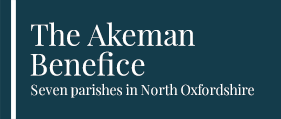St Mary the Virgin, Chesterton - our history
The oldest part of the Parish Church of St Mary is a twelfth-century arcade of three arches between the nave and the north aisle. The arcade is in the Transitional style, between Norman and Early English Gothic. The font is also believed to be from the twelfth century.
We are not entirely sure of the date of the first church on this site. However, we do know that the church was rebuilt in the early part of the thirteenth century and reconsecrated in 1238. The chancel arch and arcade of the south aisle, both of which are Early English Gothic, date from this period. The decorated Gothic bell tower was added in the early fourteenth century. The present perpendicular Gothic windows in the south aisle were added in the fourteenth or fifteenth century. In the fifteenth century a clerestory was added to the nave and a five-light east window was inserted in the chancel. There is Jacobean wooden screening still visible and a Jacobean floor brass, dated 1612, to William Maunde and his wife.
By 1552 St Mary’s had three bells and a Sanctus bell. William Watts of Bedford cast the present tenor bell in c1590. Henry Farmer of Evesham in Worcestershire and James Keene of Woodstock jointly cast the present treble and second bells in 1623. Richard III Chandler of Drayton Parslow in Buckinghamshire cast the present Sanctus bell in 1715.
In 1852 the east window was replaced with a Gothic Revival Decorated Gothic four-light window and in 1854 the chancel arch was restored. In 1866 the architect F C Penrose restored much of the building, including the windows in the south aisle and some in the north aisle. He also added a turret staircase to the west tower. The clock was added in 1884.
The priest and historian Gerald of Wales held the living of St Mary’s from about 1193 until his death in c1223.
St Mary’s is a Grade 2* listed building.



